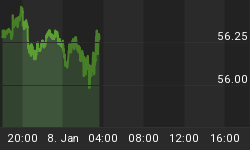Technological Innovation drives economic change. This seems like a commonplace notion. In reality, technological change is now outpacing both economic policy in Canada and the capacity of industry to respond in a timely fashion. And, many of the transformations we are experiencing are coming from do-it-yourself (DIY) models that are lowering the costs and democratizing the production of everyday products, heralding a new age of manufacturing. 3D printing which is one of the best examples of this process is opening up new opportunities and new manufacturing activities at a rapid pace in industries as varied as aviation, the production of cars, medical devices and jewelry.
Technically, the 3D process is called additive printing. The more common term, 3D printing, allows individuals and companies to create a prototype or product on their computers and simply press print to produce it. 3D printers are like inkjet machines. The printing head moves back and forth over a small area and by accretion builds an object, like an iPhone case, for example. A Canadian company by the name of Kor EcoLogic, based in Manitoba has produced one of the world s first 3D printed body frames for a car, the Urbee. The car frame was printed in 50 large blocks using a Stratasys Fortus printer.
3D printing actually began in 1984 when early inkjet printers were adapted to print materials. Essentially, 3D printing moves a digital file from the computer to a printer that layers plastics, resins and other materials onto a flat surface and over time builds the object. Larger and larger machines became available in the 1990 s and by the early 2000 s there were even experiments with printing tissue and in one case creating a kidney.
If all of this sounds like a science fiction film, you are probably right, except that the potential economic benefits far outweigh any of the doubts we may have about the process. For example, a RepRap machine is a low cost self-replicating device that can reproduce itself almost as quickly as it can fabricate the toe clips for a bicycle or a plastic cup. More recently, MakerBot Industries has released a machine that can not only replicate itself, but also with open source software allow users and creators to produce the castings needed for the fabrication of ceramic objects a new technology recreates an old one.
In 2008, the first prosthetic leg was produced using 3D printers. In 2009, a company by the name of Organovo produced blood vessels using 3D printers. And then, in 2011 the world s first airplane was produced using the same methods and machinery that also made it possible to produce a complete functioning bicycle and even a gun. A company in the Netherlands used a 3D printer to produce an implantable jaw.
All of these activities are evidence of a field that is growing at a very fast pace. The Mars Rover for example has a number of parts that were made with 3D printers and what this points towards is that no manufacturing activity will ever again escape the impact of this technology. As the software and the hardware improve and as the speed of production accelerates, we will be able to repatriate some of the manufacturing that we sent to China and other countries. In the second article of this series, I will explore the potential economies of scale that 3D printing and technologies like it will introduce into the manufacturing process. I will also discuss why this may be an opportunity for Canada to link its investment in research and innovation to design.
















